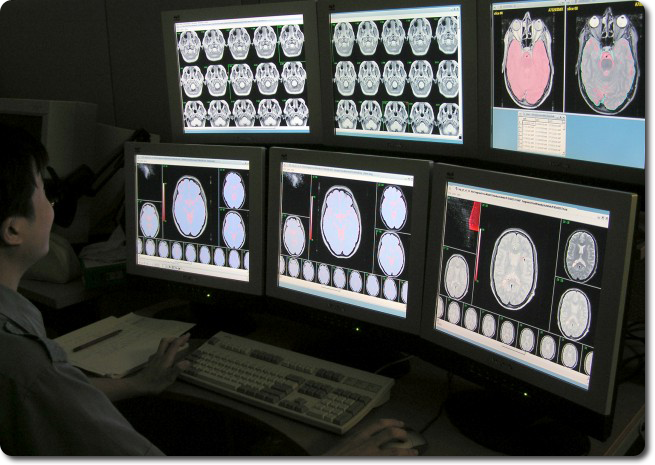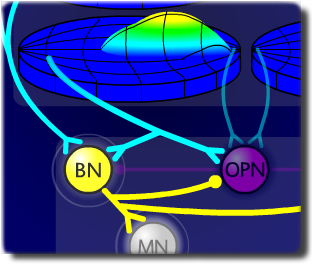ResearchSaccadic Eye MovementsOne of the most important functions of the central nervous system is the generation of coordinated movement in response to, and in expectation of, the changing environment around us. The rapid movements of our eyes from one interesting visual object to another represents a simple sensory-to-motor transformation that has provided many significant insights into our understanding of how the brain controls movement. These eye movements, called saccades, can be triggered automatically, such as how fireworks can cause us to quickly orient toward them, or can be initiated voluntarily, such as when we are looking for a friend on a busy street corner. |
 |
Research Demonstration Saccadic Eye Movements through more specific levels of our analysis |
We can measure saccadic eye movements very precisely in the laboratory. We use a video-based eye tracker that is completely non-invasive. We investigate behaviour of control participants (ages: 1-90 years) and patients with unique neurological and psychiatric disorders to identify specific deficits in eye movement control. We use functional brain imaging (fMRI) to measure the brain activity while subjects make saccades and we use this information to infer how the system works to control the behaviour in controls and patients. Many brain areas are interconnected into a vast network to control eye movements, but by combining the knowledge we gain from the behavioural and fMRI experiments we hope to better understand how problems within this neural network lead to the deficits in neurological and psychiatric patient groups. The purpose of our research is to further our knowledge of how these brain areas contribute to the initiation, or suppression, of saccades. |
We record eye movements from patients diagnosed with attention deficit hyperactivity disorder (ADHD), autism, Fetal Alcohol Spectrum Disorder (FASD), Tourette syndrome, Parkinson's disease, Huntington's disease, Amyotrophic Lateral Sclerosis (ALS), Alzheimer`s disease, Mild Cognitive Impairment (MCI), Progressive Supranuclear Palsy (PSP), as well as patients suffering from stroke or tumours. The patients perform several eye movement tasks and we characterize any deficits they may have and relate them to our understanding of the brain circuit controlling eye movements. |
Publications |